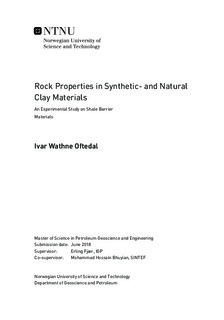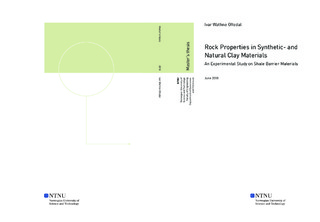| dc.description.abstract | Since the late 1960's, thousands of wells have been drilled on the Norwegian Continental Shelf (NCS) - following the discovery of large hydrocarbon reserves on what eventually became Norwegian territory in the North Sea. Every drilled well has had its own purpose - exploration, production and/or injection. Independent of the purpose, every well has to undergo a series of mechanical operations in order to ensure that the hole will withstand the pressures in the underlying formations when the well reaches the end of its life and is plugged and abandoned.
For a number of years, plugging a well meant that the operator had to mill out large sections of casing in order to set cross-sectional cement plugs - an operation that is time-consuming and challenging because of the handling of the steel swarf from the milling process that must be circulated back to the surface and treated thereafter. In later years, as more focus has been shifted towards an effective plug and abandonment (P\&A) approach, the cost of plugging operations have decreased substantially.
One method of special interest, that is the foundation of this thesis, is the application of mobile/ductile/plastic formations creating natural barriers in the annulus - primarily between the production casing and the formation. A naturally occuring rock with the properties to do so is to many known as shale. Shale is a broad term, but certain shale types have proven excellent in creating an impermeable and self-healing seal - a property that is not achievable in hardened cement.
A major part of this project has consisted of data acquisition from laboratory tests on different compositions of fine grained quartz (silt), kaolinite and smectite and also two naturally occurring shales - Pierre and Sele equivalent shale. These tests were performed in the Formation Physics laboratory of SINTEF Trondheim.
Given that kaolinite and smectite are two clay minerals with different properties, it was expected that a trend with regards to different ratios between sand, kaolinite and smectite and the transient permeability would be observed. This turned out correct as the permeability decreased with the increasing clay ratio in the samples. Especially notable is the difference between kaolinite- and smectite samples, with a permeability at least one order of magnitude lower in the smectite samples (down to 5 nD).
The tests on the Pierre- and Sele shales were performed with some suspense as to how the samples would behave. The explanation is that the samples did not come in normal "core-geometries", but were crushed and mixed with brine before exposed to axial load. It turned out that as the samples were allowed to compact under axial loads in excess of 10 MPa, the behaviour during the tests approached that which one would expect from a "normal" shale sample regarding the tightness of the material.
Acoustic properties, porosity measurements and strain measurements have also been acquired, contributing to the acquisition of data in the rock samples that were tested. | |

